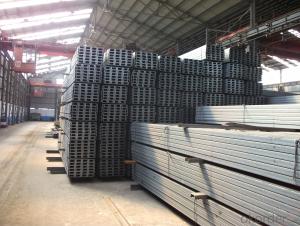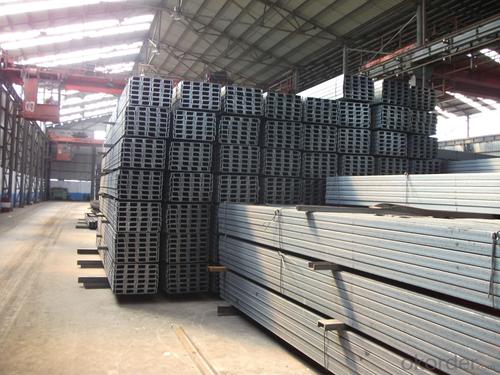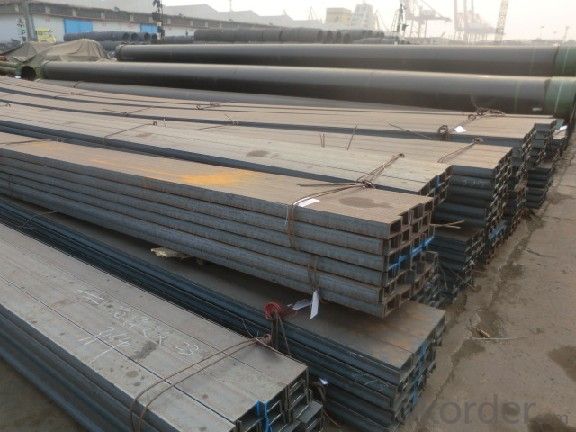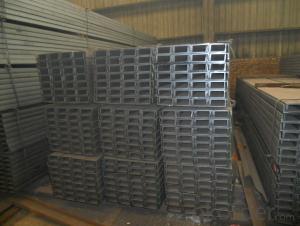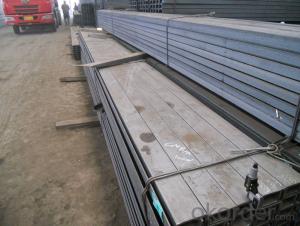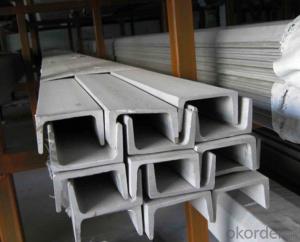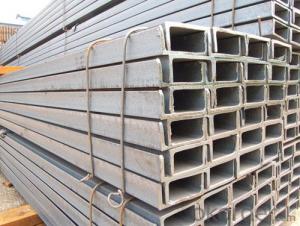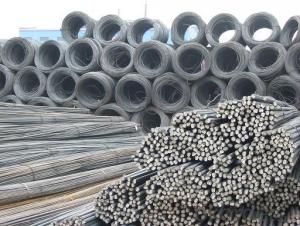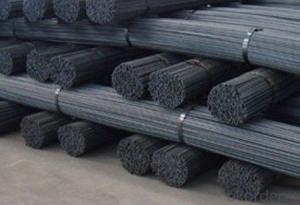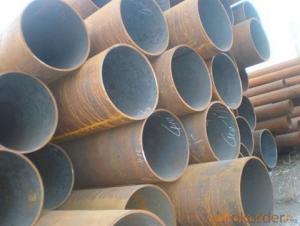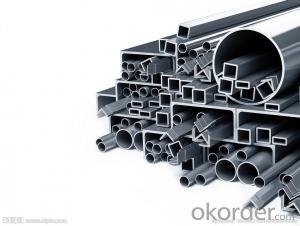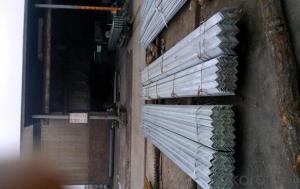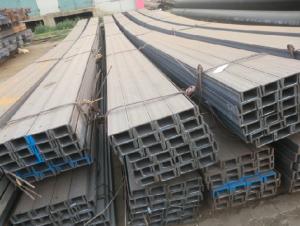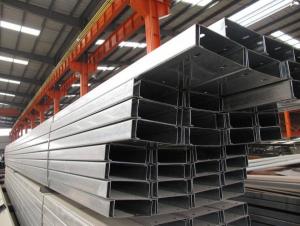ss400 hot rolled structural mild carbon u steel channel bar in sale
- Loading Port:
- Tianjin
- Payment Terms:
- TT or LC
- Min Order Qty:
- 25 m.t.
- Supply Capability:
- 21000 m.t./month
OKorder Service Pledge
OKorder Financial Service
You Might Also Like
Specifications
U Steel Channel Bar
1.High mechanical strength
2.Dimension:50*37*4.5-400*104*16.5mm
3.Grade:Q235,S235JR,SS400
4.Length:6-12m
Details of U Steel Channel Bar
| Name | U Steel Channel Bar |
| Standard | GB/T707-1988 GB 9787-88 Q235B JIS G3192-2006 SS400 EN 10025 S325JR |
| Grade | Q235,SS400,S235JR |
| Dimensions | GB Steel channel 50*37*4.5-400*104*14.5 JIS Steel channel 75*40*3.8*7-152*76*6.4*9 EN Steel channel 140*60*7*10-200*75*8.5*11.5 |
| Length | 6-12m |
| Technique | Hot rolled |
| Tolerance | As the standard or as your requirement |
| Surface treatment | Galvanized, paint |
| Application | Steel structural,doors, railway and traffice,vehchile, mechine |
| Certificated | BV |
| Packing details | standard export packing or as your requirement |
| MOQ | 25 tons |
| Delivery | Within 25 days after deposit |
| Payment | T/T or L/C |
Advantage of U Steel Channel Bar
1.Convenient in construction and save much time and labor
2.High mechanical strength
3.Low price, high quality
Q1: Why buy Materials & Equipment from OKorder.com?
A1: All products offered byOKorder.com are carefully selected from China's most reliable manufacturing enterprises. Through its ISO certifications, OKorder.com adheres to the highest standards and a commitment to supply chain safety and customer satisfaction.
Q2: How do we guarantee the quality of our products?
A2: We have established an advanced quality management system which conducts strict quality tests at every step, from raw materials to the final product. At the same time, we provide extensive follow-up service assurances as required.
Q3: How soon can we receive the product after purchase?
A3: Within three days of placing an order, we will begin production. The specific shipping date is dependent upon international and government factors, but is typically 7 to 10 workdays.
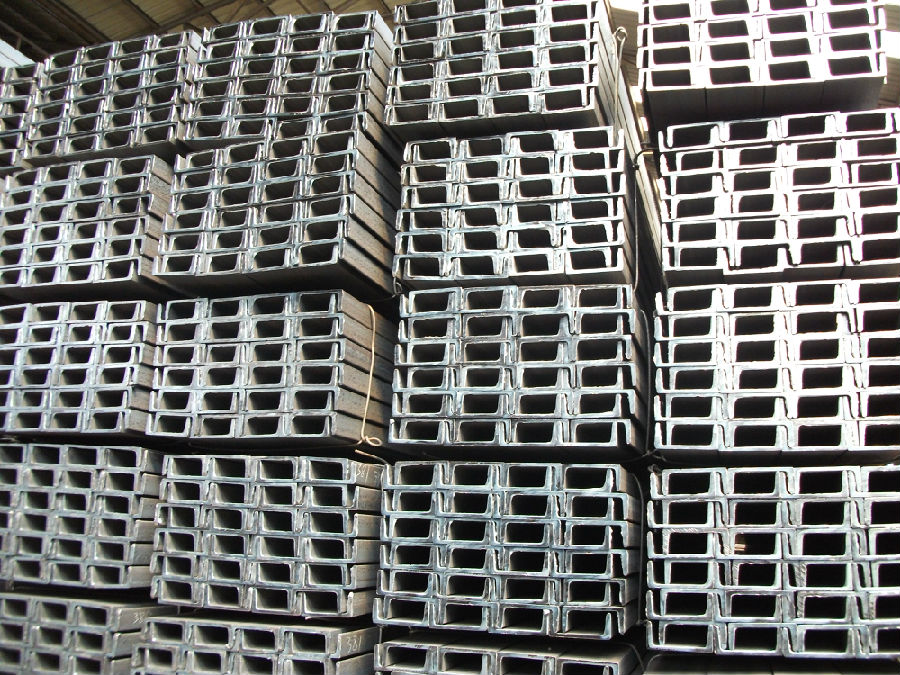

- Q: What direction does channel steel use best?
- The ability of the channel to bear the vertical load is proportional to its vertical cross section, so the opening is left or right, and the maximum vertical load can be carried.
- Q: How much is the channel steel? How much is one and how long is it?. What is the price of different sizes?
- This is too difficult for you to answer, for example: 10# channel steel, the worst wide 10mm, width 5MM, material thickness of about 5MM, the price of about 95 yuan. The national standard is about 150 yuan.
- Q: Are steel channels suitable for use in warehouse storage systems?
- Yes, steel channels are suitable for use in warehouse storage systems. Steel channels provide a strong and durable framework for supporting heavy loads in a warehouse. They are capable of withstanding the weight of various storage items and can be utilized in various storage configurations such as pallet racking systems, shelving units, or mezzanine platforms. Steel channels are resistant to damage, corrosion, and wear, ensuring a long lifespan for the storage system. Additionally, they can be easily customized and adjusted to accommodate different storage needs and configurations, making them a versatile choice for warehouse storage systems.
- Q: No. 20 b one meter with multiple channel
- Each physical channel is the standard provisions of 20b# weight 25.777 kg, but the actual weight is not up to a difference.
- Q: Can steel channels be used for mezzanine floors?
- Indeed, mezzanine floors can utilize steel channels. Due to their robustness and durability, steel channels are frequently employed in construction. They serve as the main structural support for mezzanine floors, offering a solid framework for the raised platform. The fabrication and installation of steel channels are simple, rendering them a practical option for constructing mezzanine floors. Furthermore, steel channels have the capacity to withstand substantial loads, making them suitable for accommodating storage, offices, or supplementary workspaces. In summary, steel channels are a suitable and frequently employed material in the construction of mezzanine floors.
- Q: What are the different insulation options for steel channels?
- Steel channels have several insulation options available depending on specific requirements and environmental conditions. Commonly used insulation options include: 1. Mineral wool insulation: With excellent thermal and acoustic insulation properties, mineral wool is a popular choice. It is made from natural or synthetic minerals and is available in forms like batts, blankets, or loose-fill. Mineral wool insulation is non-combustible, moisture-resistant, and effectively insulates against heat transfer and sound transmission. 2. Foam insulation: Foam insulation is widely used and has various types, such as rigid foam boards and spray foam. Rigid foam boards, made of polystyrene or polyurethane, can be easily cut and fitted into steel channels. Spray foam is applied as a liquid and expands into a solid foam, providing superior insulation and air sealing. 3. Fiberglass insulation: Affordable and easy to install, fiberglass insulation is a common choice. Made from glass fibers, it is available as batts or loose-fill. Fiberglass insulation reduces heat transfer and provides acoustic insulation. Proper installation is crucial to avoid gaps or compression that could reduce its effectiveness. 4. Reflective insulation: Reflective insulation is used for its ability to reflect radiant heat. It consists of a reflective surface, often aluminum foil, installed facing an air gap. This air gap reduces heat transfer through radiation. Reflective insulation is lightweight, easy to install, and suitable for steel channels. 5. Cellular glass insulation: Cellular glass insulation is highly resistant to moisture and provides excellent thermal insulation. Made from glass with a closed-cell structure, it is impermeable to water and resistant to mold growth. Cellular glass insulation is commonly used in high temperature or moisture-resistant applications. Factors such as thermal conductivity, fire resistance, moisture resistance, and acoustic performance should be considered when selecting insulation for steel channels. Seeking advice from a professional or insulation manufacturer can help determine the most suitable option based on specific requirements and budget constraints.
- Q: What are the different types of support methods for steel channels?
- There are several different types of support methods for steel channels, depending on the specific application and structural requirements. Some common support methods include: 1. Beam and column supports: Steel channels can be supported by beams and columns, which provide vertical support and distribute the weight of the channel. This is a common method used in building construction, where steel channels are often used as structural members. 2. Hanging supports: Steel channels can be suspended from above using hanging supports such as rods, cables, or chains. This method is often used in applications where the channel needs to be elevated or hung from a ceiling or overhead structure. 3. Bracket supports: Steel channels can be supported by brackets, which are fixed to a wall or other surface. Brackets provide lateral support and stability to the channel, preventing it from bending or twisting under load. This method is commonly used in shelving systems or wall-mounted installations. 4. Channel supports: Steel channels can also be supported by other channels, creating a system of interconnected support. This method is often used in applications where multiple channels need to be joined together to form a larger structure or framework. 5. Channel cleats: Steel channels can be supported using channel cleats, which are metal brackets that are bolted or welded to the channel and then fixed to a supporting structure. This method provides a secure and rigid connection between the channel and the support. 6. Channel frames: Steel channels can be supported by framing systems, where multiple channels are connected together to form a frame or structure. This method is commonly used in applications such as conveyor systems or equipment supports. Overall, the choice of support method for steel channels depends on factors such as the specific application, load requirements, and desired level of stability and rigidity. Professional engineers and designers should carefully consider these factors to select the most appropriate support method for their specific project.
- Q: How do steel channels contribute to the overall cost-effectiveness of a building?
- Steel channels contribute to the overall cost-effectiveness of a building by providing structural support and reducing the need for excessive materials. These channels are versatile and can be easily fabricated to fit specific requirements, which reduces waste and construction time. Additionally, steel channels have high strength-to-weight ratio, allowing for lighter building designs and lower transportation costs. Their durability and resistance to corrosion also result in long-term cost savings by minimizing maintenance and replacement expenses.
- Q: What are the typical lengths of steel channels?
- The typical lengths of steel channels can vary depending on the manufacturer and specific requirements, but they are often available in standard sizes ranging from 6 to 20 feet.
- Q: Are steel channels suitable for swimming pool installations?
- No, steel channels are not suitable for swimming pool installations. Steel channels are typically used for structural support or as a framework for large structures, such as bridges or buildings. When it comes to swimming pool installations, materials such as concrete or fiberglass are commonly used due to their durability, waterproof properties, and ability to withstand constant exposure to water and chemicals. These materials are specifically designed for swimming pool installations and can provide a long-lasting and reliable solution.
Send your message to us
ss400 hot rolled structural mild carbon u steel channel bar in sale
- Loading Port:
- Tianjin
- Payment Terms:
- TT or LC
- Min Order Qty:
- 25 m.t.
- Supply Capability:
- 21000 m.t./month
OKorder Service Pledge
OKorder Financial Service
Similar products
Hot products
Hot Searches
Related keywords
